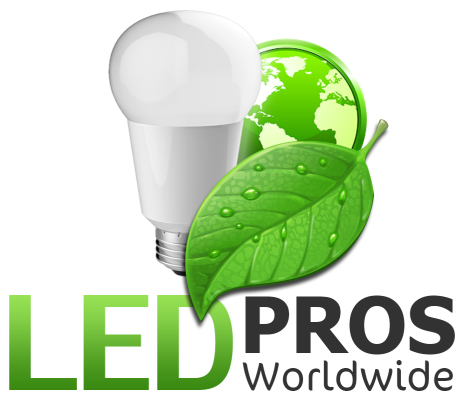Picture this: the roar of the crowd, the adrenaline pumping through the players’ veins, and the excitement of a game-winning play. But what truly brings the magic of sports to life? The answer lies in the power and precision of stadium lights. These unsung heroes of the sports world not only illuminate the field but also create an atmosphere that elevates the experience for players and spectators alike. In this article, we’ll explore the world of stadium lights, delving into their importance, the latest advancements in technology, and the various types of lights used for different sports.
The IESNA Lighting Handbook: A Guiding Light
When it comes to stadium lighting, the Illuminating Engineering Society of North America (IESNA) sets the standards. The IESNA Lighting Handbook provides comprehensive guidelines for designing and implementing effective lighting systems for various applications, including sports facilities. This valuable resource ensures that stadium lights meet the necessary requirements for illumination levels, uniformity, and glare control, creating an optimal playing environment for athletes and a visually appealing experience for spectators. Read more about Elevate Your Game: The Ultimate Guide to Field Lights for Sports Enthusiasts here.
Illuminating the Gridiron: Football Stadium Lights
Football, America’s beloved pastime, relies heavily on the power of stadium lights to create an electrifying atmosphere. Here’s what you need to know about football stadium lights:
– Illumination Levels: Football stadiums require high illumination levels, typically ranging from 75 to 100 footcandles, to ensure clear visibility for players, coaches, and officials.
– Uniformity: Even light distribution across the field is crucial to prevent shadows and dark spots that could hinder gameplay or cause safety concerns.
– Glare Control: Stadium lights must be positioned and angled properly to minimize glare, ensuring that players can track the ball without visual discomfort.
Lighting Up the Diamond: Baseball Field Lights
America’s favorite summer sport, baseball, also relies on stadium lights to extend gameplay into the evening hours. Here are some key considerations for baseball field lights:
- Pole Height: Baseball field light poles are typically taller than those used for other sports, ranging from 70 to 110 feet, to provide optimal illumination and minimize glare.
- Fixture Placement: Lights are strategically placed around the field to ensure even illumination and reduce shadows, especially in critical areas like the infield and outfield.
- Color Rendering: Baseball field lights should have a high color rendering index (CRI) to accurately portray the colors of the ball, uniforms, and field markings.
Kicking It Up a Notch: Soccer Field Lights
Soccer, the world’s most popular sport, also benefits from well-designed stadium lights. Here’s what you should know about soccer field lights:
– Illumination Levels: Soccer fields require slightly lower illumination levels compared to football, typically ranging from 50 to 75 footcandles.
– Uniformity: Consistent light distribution is essential to ensure that players can accurately judge the distance and trajectory of the ball.
– Glare Control: Proper glare control is crucial to prevent visual discomfort for players and spectators, especially when the ball is in the air.
The Future Is Bright: LED Stadium Lights
In recent years, LED technology has revolutionized the world of stadium lights, offering numerous benefits over traditional lighting systems:
- Energy Efficiency: LED lights consume significantly less energy than metal halide or high-pressure sodium lamps, resulting in substantial cost savings.
- Longer Lifespan: With a lifespan of up to 100,000 hours, LED lights require less frequent replacements, reducing maintenance costs and downtime.
- Instant On/Off: LED lights reach full brightness immediately, eliminating the warm-up time required by traditional lamps.
- Enhanced Color Rendering: LED lights offer superior color rendering, allowing for a more vivid and true-to-life viewing experience.
FAQs
- How tall are stadium light poles?
– Stadium light pole heights vary depending on the sport and venue, but they typically range from 70 to 110 feet for baseball fields and 60 to 80 feet for football and soccer fields.
- What is the recommended illumination level for stadium lights?
– Recommended illumination levels vary by sport, but generally range from 50 to 100 footcandles. Football stadiums require the highest levels, while soccer fields can be slightly lower. read more about Lights, Action, Sports! Navigating the Future of Stadium and Sports Field Illumination here.
- Are LED stadium lights more expensive than traditional lighting systems?
– While LED stadium lights may have a higher initial cost, they offer significant long-term savings through reduced energy consumption and maintenance costs.
Closing Thoughts
Stadium lights play a crucial role in enhancing the experience of sports events, providing optimal illumination for players and spectators alike. By adhering to the guidelines set forth in the IESNA Lighting Handbook and considering the specific requirements of each sport, stadiums can create an atmosphere that truly brings the magic of the game to life. As technology continues to advance, LED stadium lights offer a promising future for energy efficiency, performance, and spectator satisfaction. So the next time you find yourself cheering on your favorite team under the glow of stadium lights, take a moment to appreciate the power and precision behind this incredible technology.
